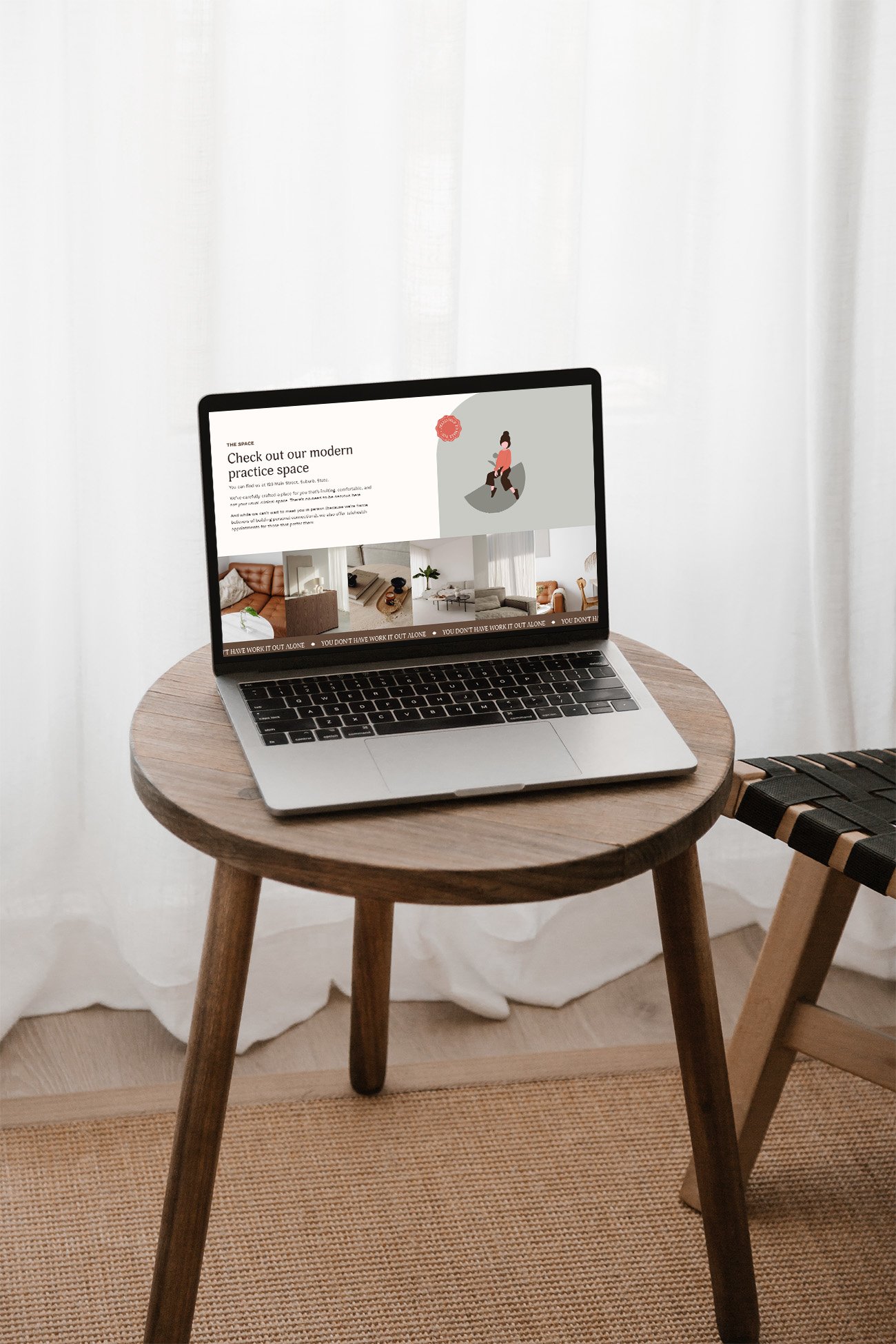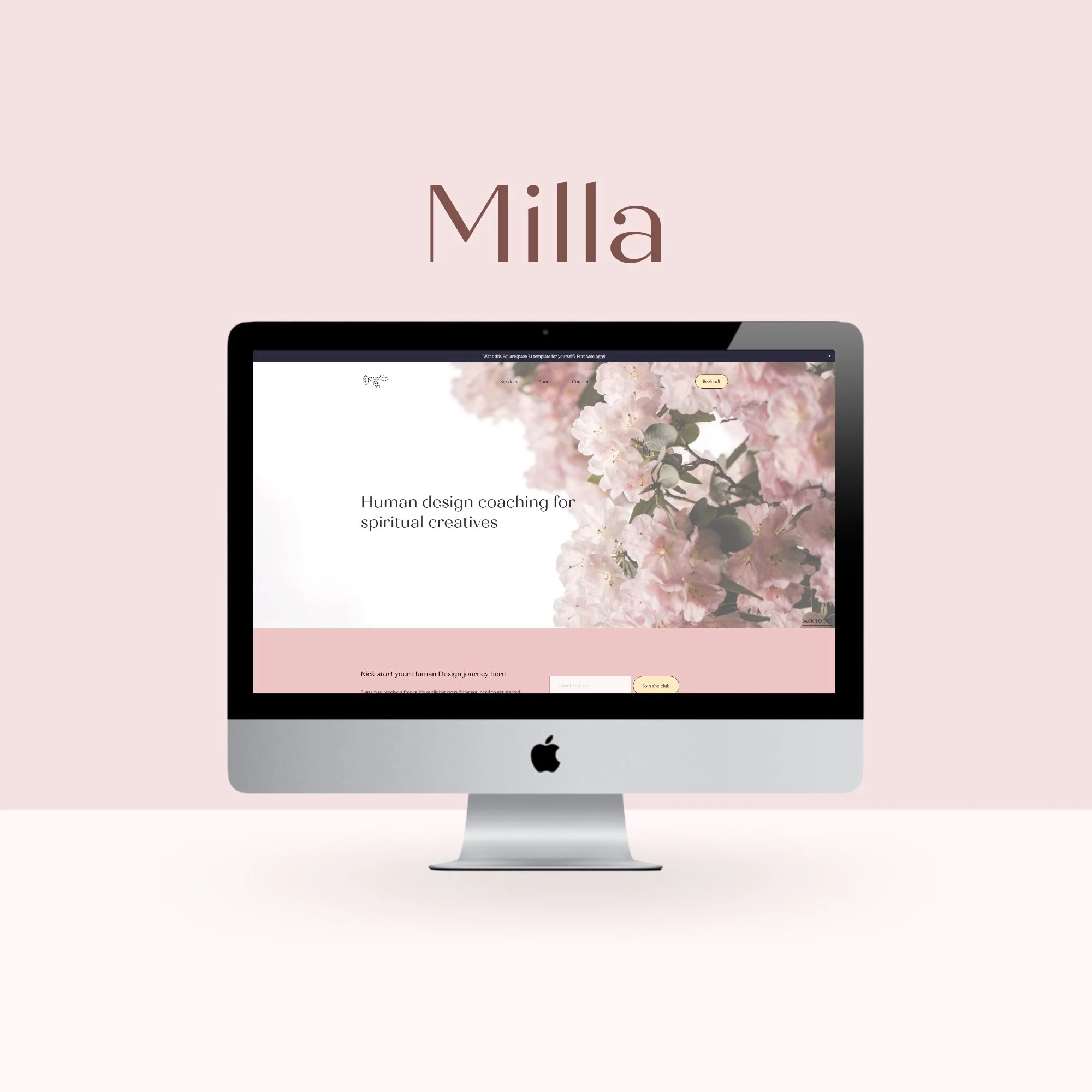Template, semi custom or custom web design: what’s right for you?
Feeling overwhelmed by the different web design options out there? Don't worry, I've got you covered!
From fully custom websites (whether on Squarespace or another platform like WordPress, Wix, Showit or WebFlow) to DIY templates, there are a lot of things to consider before deciding which approach is right for your business.
In this post I’m exploring three website design options—custom design, semi-custom design (template-based), and DIY templates—to help you determine which one suits your needs best.
To me, the key things you’ll want to consider are:
Timeframe
Time vs money
Business goals
Design & tech savviness
Here’s how I rate each of them in relation to your business:
Timeframe
Custom design
Opting for a custom website design provides the advantage of a tailored solution but takes longer to develop due to the research and design specific to your business. This option requires collaborating with your designer, comprehensive planning (from both you and your designer, as you’ll need to have your content ready to go!), and rounds of feedback / revisions to ensure it’s perfect. If you're short on time and need to launch fast, a custom design might not be the best fit for you. You’ll need to be actively involved and provide input during the discovery, design and build phases, which may not be feasible for time-constrained business owners.
Semi-custom design
Choosing a semi-custom design based on a template can significantly reduce your time to launch compared to custom design. Since the template acts as the foundation, you’ll save the time otherwise needed to research and design a custom solution as it can just be customised to reflect your branding. With a semi-custom design, you can strike a balance between timeframe, customisation and cost - and because the template already shows the layout of text, you might find it easier to write your content ready to populate.
DIY template
DIY templates can either be the quickest option or longest option in terms of lead time to launch. The quickest since you can start building your website right away, and if you’re a whiz you might get through it fast. It might also be the longest if you’re not tech savvy or don’t have an interest in this part of the process and you start to procrastinate finishing it! You’ll need to invest time in learning the template's features and customising it to align with your brand, which will come easier for some, and not for others. If you’re happy figuring it out on your own DIY does offer flexibility as you can work on it when you have the time.
Time vs. money
Custom design
Investing in custom website design requires a higher financial commitment due to the expertise and time involved. But while it might take one to two months working with a web designer to go from onboarding to website launch, they’ll be able to turn things around a lot faster than if you’re fumbling your way through a platform you’ve not yet mastered, or if you just can’t work out how to turn the idea in your head into something tangible. Plus you’ll got a unique, tailored solution that can elevate your brand and enhance user experience - which is critical if you want to keep those eyeballs on your website longer than a few seconds. In saying that, be aware that you’ll need to have your content ready to go at the start of the project - you may also like to work with a copywriter to speed this up and get the most out of your investment.
Semi-custom design
Opting for a semi-custom design strikes a good balance between investing your time and your money. Working with a designer that offers semi-custom, template-based websites means you can launch a lot faster. Your designer’s expertise is still drawn on to add your content, branding details and ensure it all suits your unique content (such as checking spacing and layouts with your content, rather than the placeholder content), but you don’t require the same upfront time required for research and design as you would a custom website. For businesses putting together their first website, you may find working to a template helps you pull together your content as you can follow the guidelines in the placeholder text rather than trying to write each web page from scratch.
DIY template
DIY templates are the most budget-friendly option. While they require more time and effort on your part to get to launch stage, they offer an affordable alternative for business owners with limited resources or those that are happy to give it a go themselves. You can take as long as you need to piece together your content and get your site set-up as you like without rushing to get content to a designer - it might even come to be a labour of love!
Business goals
Custom design
If you're actively seeking to grow your business, stand out in your field or have a professional online presence, custom design can offer strategic advantages. A designer creating a unique site for you can optimise your site for client attraction, trust and conversion, ensuring a seamless user experience and helping you to grow your business.
Semi-custom design
A semi-custom design can help you establish a solid online presence while considering business growth. Depending on the template it may already be optimised for conversion, and your designer can ensure any content is added strategically as intended, without the cost of a fully custom design.
DIY template
DIY templates are a viable option if you're just getting started or moving on from a site that you DIY’d from scratch, or you’re content with your current business status and looking for a basic but professional online presence. Keep in mind that DIY solutions may lack some advanced features and optimisation for growth, which you’ll likely need to revisit in future depending on your plans.
Design & tech savviness
Custom design
Working with a web designer is ideal if you're not confident in your eye for design. Often the trickiest part can be turning the ideas in your head into a tangible website that looks and acts how you need it to. With custom web design, designers can translate your brand vision into a visually appealing and user-friendly website, enhancing your credibility and professionalism.
Semi-custom design
With a pre-designed template your designer will be working from an existing visual foundation, meaning minimal design changes will be made to customise to your brand. In saying that, your designer will be able to effectively implement your branding and ensure the template captures your brand essence and ensure all elements work together well, especially on mobile.
DIY template
A website template can be a great way to get started on your own with most if not all of the design elements built in. It can be easy to accidentally delete or change elements that you don’t mean to though, so keep an eye on the changes you’re making as save as you go. You’ll also need to play around with different colour variations across the site so make sure sections work well together and flow without clashing - this can take a bit of trial and error, but if you’re up for it it can be a good way to get to know your site.
Summary
Choosing the right web design option depends on the factors above and likely more - your website is your online presence, so it's essential to choose wisely! This will save you both time and money in the long run.
So, where do you sit?
Custom design offers a tailored solution that’s perfect for businesses wanting to showcase a strong, professional online presence – be prepared to invest in your business, and make sure you allow time for the crucial research and design phases before it even comes time to build the site.
Semi-custom (template-based) design strikes a balance between customisation and affordability. Generally the fastest way to launch as there will be minimal changes to the design, but the benefit of having a designer know exactly how to set it all up for you.
DIY templates provide flexibility in timeframe and are a budget friendly option. You can get started right away and launch fast, but if you’re not tech savvy it can quickly take up all of your spare time when you’d rather be doing other things.
If you have any questions or want to chat about what might work best for you, feel free to reach out!
Decided on the option for you and wanna work with me?
Check out all the details here:

























